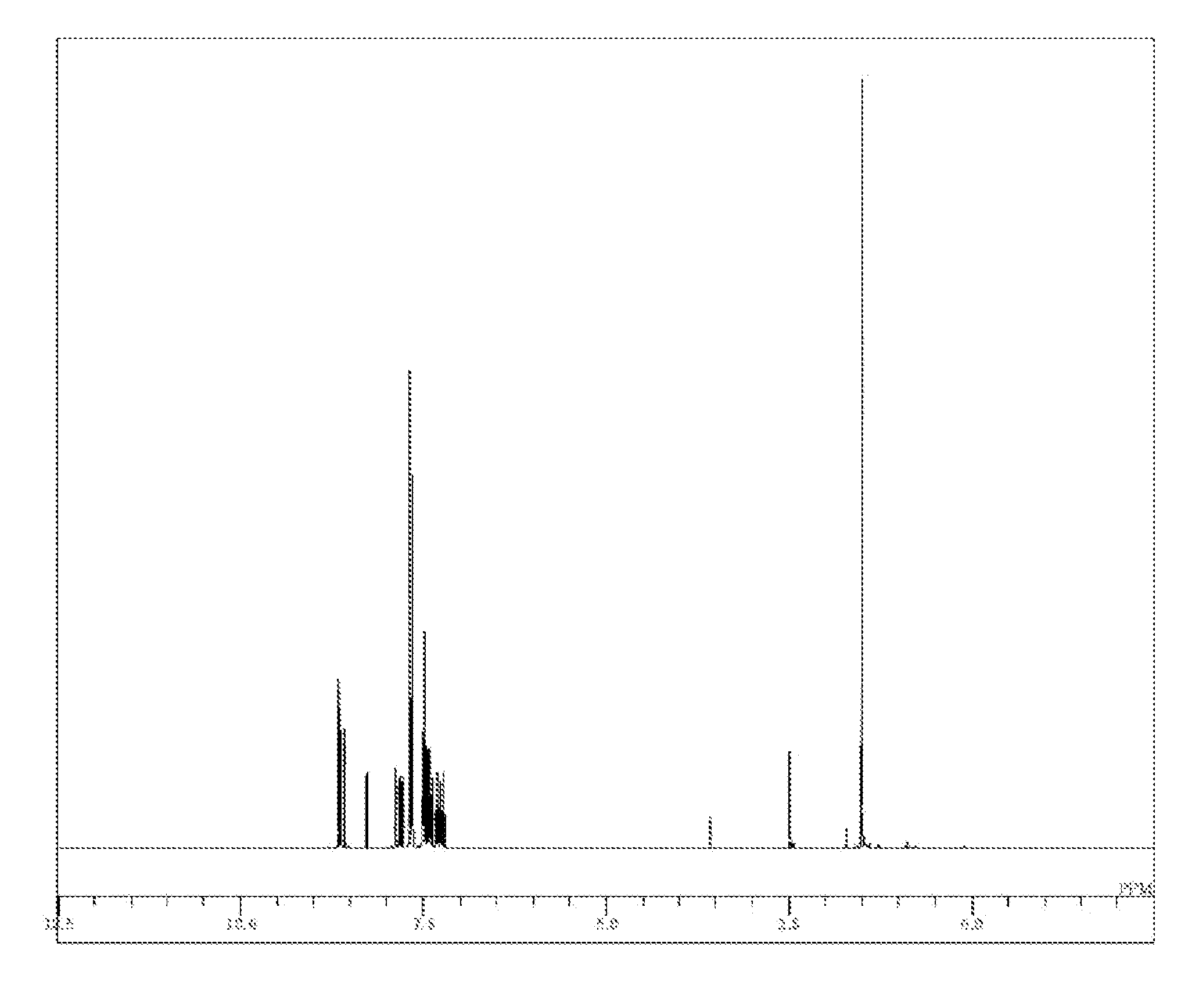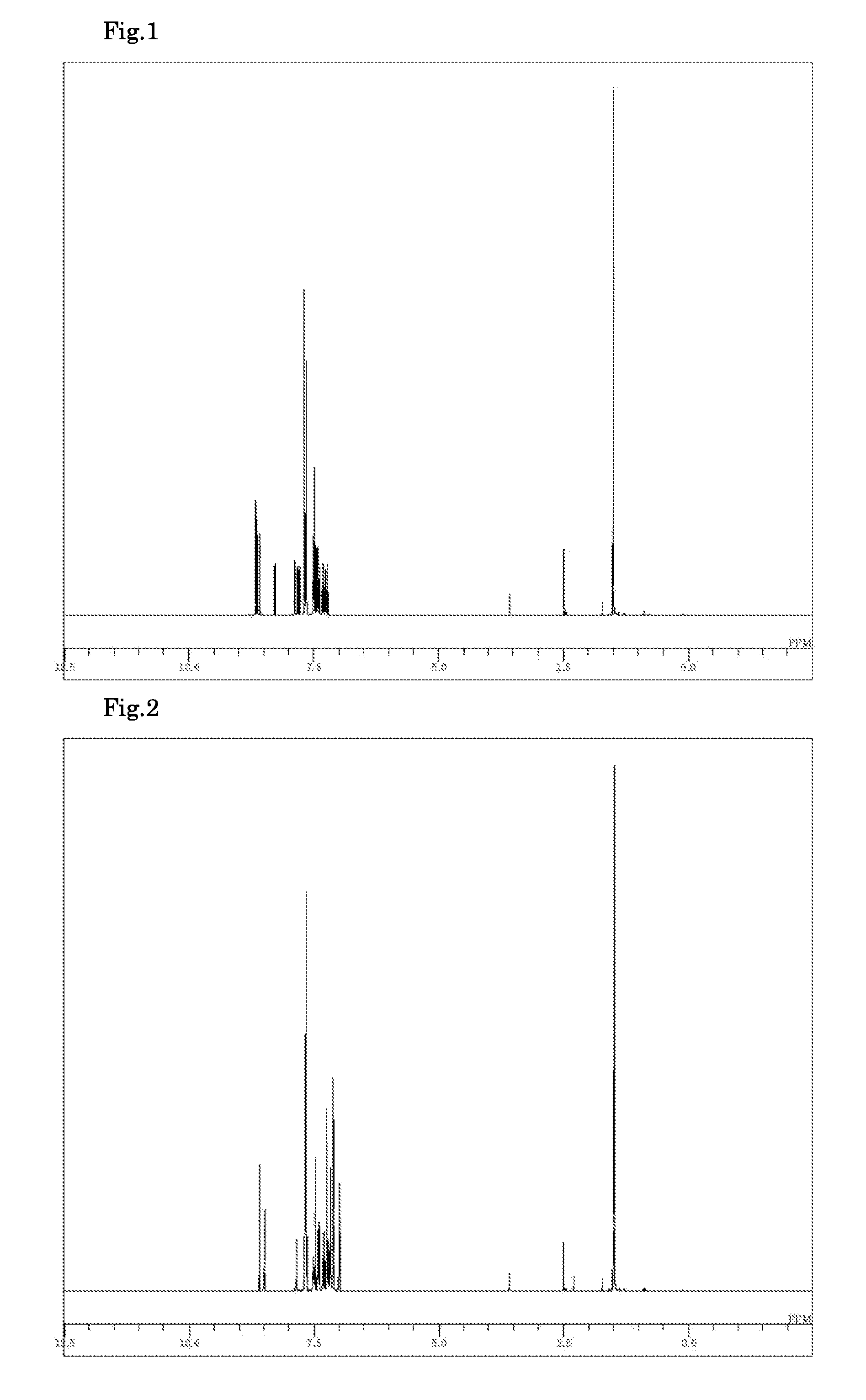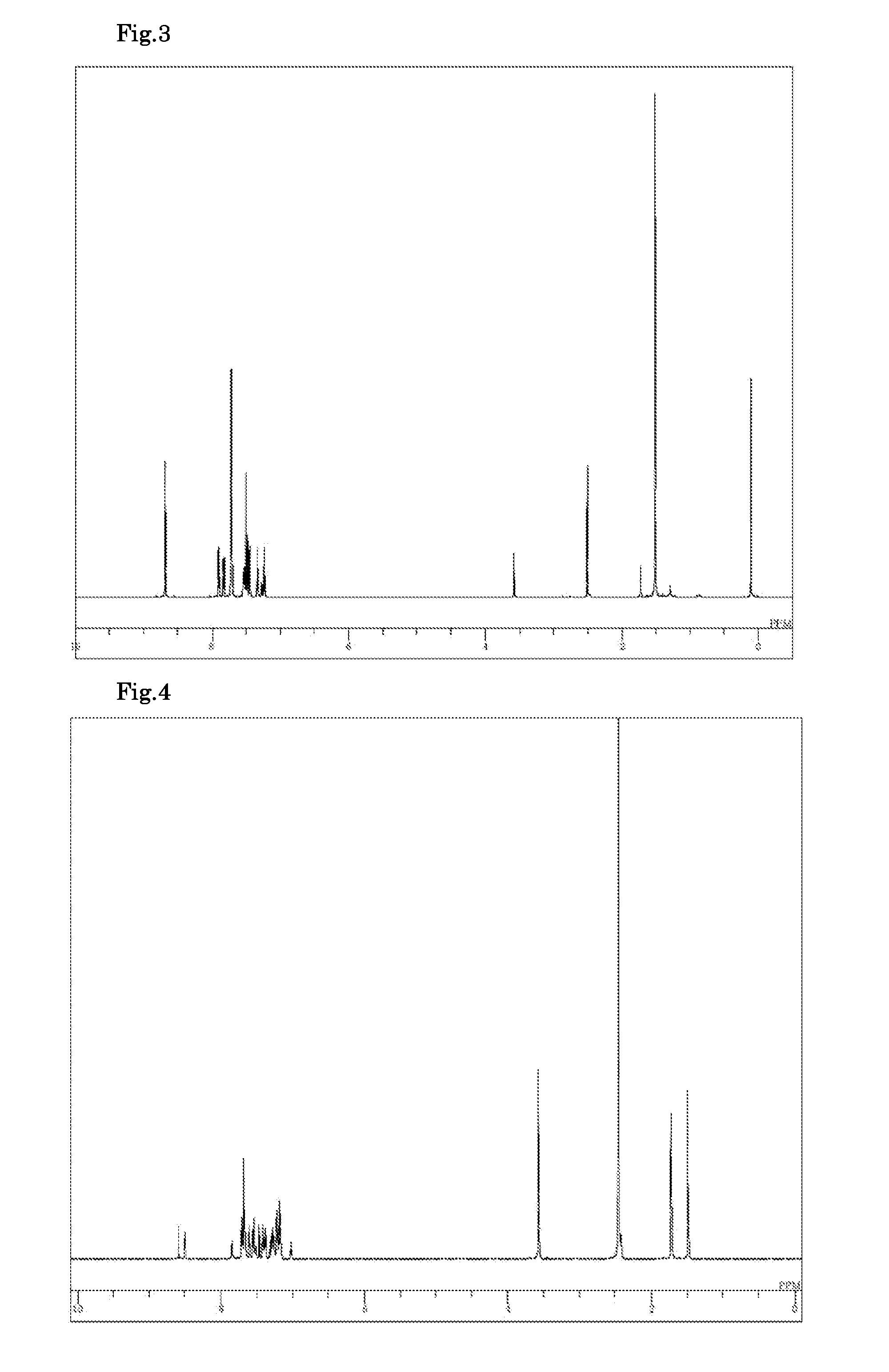Compound having indenocarbazole ring structure, and organic electroluminescent device
a technology of indenocarbazole and ring structure, which is applied in the direction of luminescent compositions, organic chemistry, triarylamine dyes, etc., can solve the problems of deterioration of the device, inability to achieve improvement in luminous efficiency, and material degradation, etc., to achieve excellent electron blocking ability, satisfactory amorphousness, and excellent amorphousness
- Summary
- Abstract
- Description
- Claims
- Application Information
AI Technical Summary
Benefits of technology
Problems solved by technology
Method used
Image
Examples
example 1
Synthesis of 12,12-dimethyl-10-phenyl-7-(9-phenyl-9H-carbazol-3-yl)-10,12-dihydroindeno[2,1-b]carbazole (Compound 5)
[0097]N-(9,9-dimethyl-9H-fluorene-2-yl)-2-bromo-aniline (18.5 g), potassium acetate (6.98 g), and DMF (95 ml) were added to a nitrogen-substituted reaction vessel and aerated with nitrogen gas for 1 hour. The mixture was heated after adding tetrakis(triphenylphosphine)palladium (1.18 g) and stirred at 100° C. for 11 hours. After the mixture was cooled to a room temperature, the reaction liquid was added to water (300 ml) and extraction was performed with toluene (300 ml). An organic layer obtained was washed with water (200 ml) twice, dehydrated with anhydrous magnesium sulfate, and concentrated under reduced pressure to obtain a crude product. The crude product was purified by column chromatography (carrier: silica gel; eluent: toluene / n-hexane) to obtain a pale yellow powder of 12,12-dimethyl-10,12-dihydroindeno[2,1-b]carbazole (7.9 g; yield 55.2%).
[0098]The resultin...
example 2
Synthesis of 12,12-dimethyl-10-phenyl-7-(4-diphenylamino-phenyl)-10,12-dihydroindeno[2,1-b]carbazole (Compound 6)
[0103]7-Bromo-12,12-dimethyl-10-phenyl-10,12-dihydroindeno[2,1-b]carbazole synthesized in Example 1 (2.0 g), 4-diphenylamino-phenylboronic acid (1.32 g), a toluene / ethanol (4 / 1, v / v) mixed solvent (15 ml), and a 2M potassium carbonate aqueous solution (3.4 ml) were added to a nitrogen-substituted reaction vessel and aerated with nitrogen gas for 30 min under ultrasonic irradiation. The mixture was heated after adding tetrakis(triphenylphosphine)palladium (0.26 g), and stirred at 73° C. for 5 hours. After the mixture was cooled to a room temperature, toluene (30 ml) and water (20 ml) were added to perform liquid separation in order to collect an organic layer. The organic layer was washed with saturated brine, dehydrated with anhydrous magnesium sulfate, and concentrated under reduced pressure to obtain a crude product. The crude product was purified by column chromatograp...
example 3
Synthesis of 12,12,12′,12′-tetramethyl-10,10′-diphenyl-10,10′,12,12′-tetrahydro-[7,7′]bis(indeno[2,1-b]carbazolyl) (Compound 102)
[0106]7-Bromo-12,12-dimethyl-10-phenyl-10,12-dihydroindeno[2,1-b]carbazole synthesized in Example 1 (4 g), bis(pinacolato)diboron (2.77 g), potassium acetate (2.69 g), and dimethyl sulfoxide (40 ml) were added to a nitrogen-substituted reaction vessel and aerated with nitrogen gas for 30 min. The mixture was heated after adding a [1,1′-bis(diphenylphosphino)ferrocene]palladium(II)dichloride dichloromethane complex (1:1) (0.22 g), and stirred at 90° C. for 12 hours. After the mixture was cooled to a room temperature, toluene (150 ml) and saturated brine (200 ml) were added to perform liquid separation in order to collect an organic layer. The organic layer was washed three times with saturated brine (100 ml), dehydrated with anhydrous magnesium sulfate, and concentrated under reduced pressure to obtain a crude product. The crude product was purified by colu...
PUM
| Property | Measurement | Unit |
|---|---|---|
| voltage | aaaaa | aaaaa |
| luminance | aaaaa | aaaaa |
| heat resistance | aaaaa | aaaaa |
Abstract
Description
Claims
Application Information
 Login to View More
Login to View More - R&D
- Intellectual Property
- Life Sciences
- Materials
- Tech Scout
- Unparalleled Data Quality
- Higher Quality Content
- 60% Fewer Hallucinations
Browse by: Latest US Patents, China's latest patents, Technical Efficacy Thesaurus, Application Domain, Technology Topic, Popular Technical Reports.
© 2025 PatSnap. All rights reserved.Legal|Privacy policy|Modern Slavery Act Transparency Statement|Sitemap|About US| Contact US: help@patsnap.com



